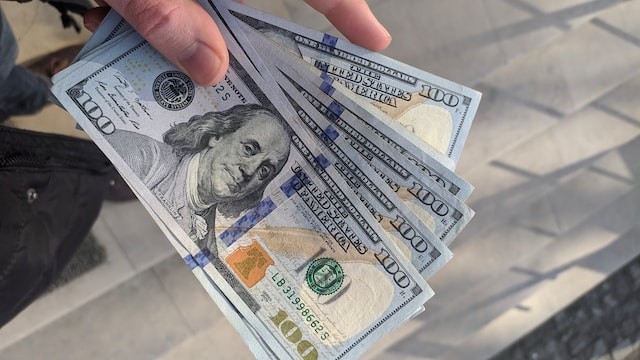
Unexpectedly, on this year's Black Friday, investors thinking that interest rates were at their highest point caused the value of the US dollar to drop significantly. The financial markets, usually calmer on days dedicated to shopping, saw a surge in activity as traders responded to this unanticipated change in the currency landscape.
The yen strengthened on Friday, Nov. 24, as Japan's core consumer price growth picked up, supporting expectations that the Bank of Japan (BOJ) may soon reduce monetary stimulus. Meanwhile, the US dollar declined as investors bet that US interest rates have peaked.
Dropping US Dollar
The US Dollar (USD) is gaining momentum as markets process the Thanksgiving turkey. However, it is noteworthy to mention that US yields are rising in tandem with dropping bond prices. The benchmark US 10-year note jumped from 4.40% on Wednesday's close to 4.4% on Friday's opening price. As Black Friday gets underway, traders will be watching some crucial US data that could make or break the US Dollar Index (DXY) performance at the end of this week.
The Purchasing Managers Index preliminary reading for November will be the main topic for discussion this Friday. Since several key EU nations saw their European sub-50 PMIs soar on Thursday, the significance is even greater. The US PMI numbers this afternoon could drop below 50, indicating that Europe is recovering more quickly than the US. This would mean a significant decline in the value of the US dollar.
READ ALSO : Retailers Express Caution and Doubt about Holiday Shopping, Causing "Black Friday Blues."
Depreciation: Good or Bad?
Whether currency depreciation is beneficial or detrimental primarily relies on one's point of view. Currency depreciation is advantageous to chief executive officers of exporting companies. Because the price of your products has decreased for customers in your target market, demand for them will increase when the value of your country's currency is weaker than that of the currency in your export market.
However, currency depreciation is bad news if your company imports raw materials to make your finished products. A weaker currency will make buying raw materials more expensive, forcing you to either reduce your profit margins or raise the prices of your finished goods, which may result in less demand.
There is a comparable dynamic among consumers. Purchasing a new imported car or going on vacation to Europe becomes more expensive when the dollar weakens. Additionally, it may result in unemployment if your employer's operations are negatively impacted by the growing cost of imported raw materials, necessitating layoffs. Conversely, increased demand from overseas buyers may lead to a boom in your employer's business, resulting in better job security and higher wages.
Many factors influence the value of a currency. The monetary policies of both countries, trade balances, inflation rates, investor confidence, political stability, and reserve currency status all affect how much the US dollar depreciates concerning other currencies. Politicians, market observers, economists, and executives in the business world closely observe the constantly shifting combination of economic variables to predict how the dollar will respond.
RELATED ARTICLE: Money And Financial Problems: 6 Lessons That Can Help You Fix It



